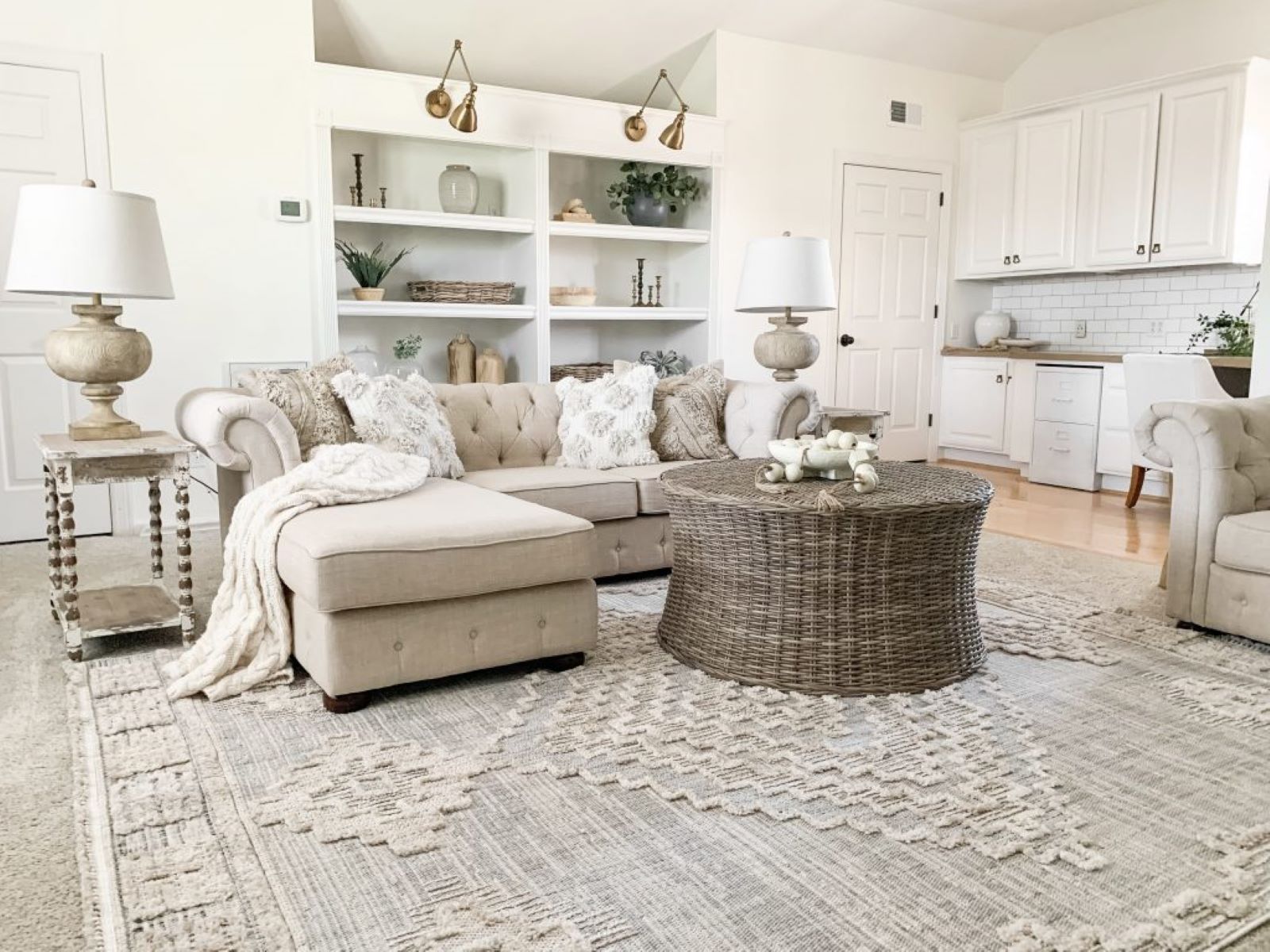

Articles
What Are Area Rugs
Modified: January 18, 2024
Discover the latest articles on area rugs, including tips for choosing the perfect rug, cleaning and maintenance, and how to incorporate rugs into your home décor.
(Many of the links in this article redirect to a specific reviewed product. Your purchase of these products through affiliate links helps to generate commission for Storables.com, at no extra cost. Learn more)
Introduction
Area rugs are an essential element in interior design that can greatly enhance the aesthetics and functionality of any space. These versatile pieces of decor come in a variety of styles, sizes, and materials, allowing individuals to personalize their homes and create a cozy and inviting atmosphere.
In essence, an area rug is a decorative textile floor covering that is typically placed on top of a hard surface such as hardwood, tile, or laminate flooring. It serves multiple purposes, from adding warmth and comfort underfoot to defining and delineating specific areas within a room.
However, area rugs are not just limited to homes. They are widely used in commercial spaces, such as offices, hotels, and retail stores, to enhance the visual appeal and functionality of the environment.
In this comprehensive guide, we will delve into the world of area rugs, exploring their various types, benefits, and how to choose and maintain them. Whether you are a homeowner looking to spruce up your living space or a design enthusiast seeking to elevate any interior, this article will equip you with the necessary knowledge to make informed decisions in utilizing area rugs.
Key Takeaways:
- Area rugs are versatile decor elements that enhance aesthetics, provide comfort, and define spaces. They come in various types, from traditional to contemporary, offering homeowners endless options for personalization and style.
- The history of area rugs reflects diverse cultural influences and design trends, showcasing the enduring beauty and craftsmanship of these floor coverings. Decorating with area rugs allows for creativity, personal expression, and the creation of inviting living spaces.
Read more: Where To Dispose Of Area Rugs
Definition of Area Rugs
An area rug is a type of floor covering that is typically made of fabric or natural fibers. It is designed to be placed on top of a hard surface, such as wood or tile flooring, to provide comfort, style, and functionality.
Area rugs come in a wide range of sizes, shapes, colors, patterns, and materials, allowing individuals to choose the perfect rug that complements their interior decor and suits their specific needs. They can vary from small accent rugs that add a pop of color to larger rugs that cover a significant portion of the floor.
One characteristic that sets area rugs apart from wall-to-wall carpeting is their ability to be easily moved and rearranged. Unlike permanent carpeting, area rugs are versatile and can be rolled up and transported from one room to another or even taken to a new home. As a result, they offer homeowners the flexibility to change the look and feel of their living space without the need for major renovations.
Area rugs serve several practical purposes. They provide a soft and comfortable surface to walk on, making them particularly beneficial in rooms where people spend a lot of time on their feet, such as living rooms, bedrooms, and kitchens. Additionally, area rugs act as a sound barrier, minimizing noise and echo in rooms with hard flooring.
Moreover, area rugs are used to define and anchor different areas within a room. For instance, a large area rug can delineate a seating area in a living room, while a runner rug can create a pathway in a hallway or entryway. This helps create visual boundaries and adds structure to open-concept spaces.
Overall, the definition of an area rug encompasses its ability to enhance the appearance, comfort, and functionality of a room while allowing for customization and versatility in design and placement.
History of Area Rugs
The use of rugs dates back to ancient times, making their history rich and diverse. Area rugs have been an integral part of various cultures and civilizations, serving both practical and decorative purposes.
One of the earliest recorded uses of rugs can be traced back to ancient Egypt around 2000 BCE. The Egyptians used rugs made of reeds and palm leaves to provide insulation and protect against the cold desert sands. These early rugs were predominantly simple and functional, with designs primarily consisting of geometric patterns.
In ancient Persia (modern-day Iran), the art of rug making flourished and reached its pinnacle during the Safavid dynasty in the 16th century. Persian rugs became renowned for their intricate designs, exquisite craftsmanship, and rich symbolism. These rugs often featured intricate floral motifs, intricate borders, and elaborate medallions, reflecting the artistic expression of the Persian culture.
During the Middle Ages, the practice of rug weaving spread throughout Europe, particularly in regions such as Spain, France, and England. European rugs were influenced by various design motifs, including Islamic patterns brought back by Crusaders and the opulent styles of the Renaissance era.
In the 17th century, rug making began to thrive in India under the Mughal Empire. Indian rugs showcased delicate floral and botanical designs, often incorporating vibrant colors and luxurious materials such as silk. These rugs gained popularity among European traders and aristocracy, who sought to adorn their homes with exotic and exquisite floor coverings.
By the 19th century, the Industrial Revolution brought significant changes to the rug-making industry. The invention of power looms and advances in synthetic dyes made the production of rugs more efficient and affordable. As a result, rugs became more accessible to a wider range of people.
Throughout the 20th century, various styles and movements emerged in the realm of rug making. From the geometric patterns of the Art Deco era to the abstract designs of the mid-century modern movement, area rugs continued to evolve alongside changing trends in interior design.
Today, the tradition of rug making continues to thrive, with artisans and designers around the world producing rugs that blend traditional techniques with contemporary aesthetics. Area rugs have become both a reflection of cultural heritage and a medium for artistic expression.
The history of area rugs is a testament to the enduring beauty and craftsmanship of these floor coverings, as well as their ability to transcend time and culture.
Different Types of Area Rugs
Area rugs come in a plethora of styles, materials, and designs, allowing individuals to find the perfect rug that suits their personal taste and complements their interior decor. Here are some of the most common types of area rugs:
- Traditional Rugs: Traditional rugs are characterized by ornate patterns, intricate detailing, and a focus on symmetry. They often feature floral motifs, medallions, and borders. Traditional rugs are typically made of wool or silk and are known for their timeless elegance.
- Contemporary Rugs: Contemporary rugs embrace modern design aesthetics. They can range from bold and abstract patterns to minimalist designs with clean lines. Contemporary rugs often incorporate vibrant colors and innovative materials, such as synthetic fibers or a combination of natural and synthetic materials.
- Transitional Rugs: Transitional rugs combine elements of traditional and contemporary styles. They bridge the gap between old-world charm and modern sensibilities. Transitional rugs commonly feature subtle patterns, soft color palettes, and versatile designs that can complement a variety of interior styles.
- Shag Rugs: Shag rugs are known for their long, fluffy pile, which creates a luxurious and cozy feel. They are often made of soft materials like wool or synthetic fibers, providing a plush and comfortable surface. Shag rugs are popular choices for bedrooms and areas where comfort and warmth are desired.
- Flatweave Rugs: Flatweave rugs, as the name suggests, have a flat, woven texture without any pile. They are lightweight and durable, making them ideal for high-traffic areas. Flatweave rugs often feature geometric patterns, stripes, or tribal designs. They can be made of wool, cotton, jute, or synthetic materials.
- Natural Fiber Rugs: Natural fiber rugs are made from plant-based materials, such as jute, sisal, seagrass, or bamboo. These rugs offer a more organic and eco-friendly option. Natural fiber rugs are known for their durability and texture, adding a rustic or coastal touch to any space.
- Oriental Rugs: Oriental rugs originated from countries in the Middle East and East Asia, such as Iran, Turkey, China, and Afghanistan. They are characterized by intricate patterns, vibrant colors, and exceptional craftsmanship. Oriental rugs are typically hand-knotted or hand-woven using wool or silk fibers.
- Kilim Rugs: Kilim rugs are flatwoven rugs that originate from various regions, including Turkey, Iran, and North Africa. They feature bold geometric patterns and vibrant colors. Kilim rugs are reversible, making them versatile and suitable for both casual and formal spaces.
These are just a few examples of the diverse range of area rugs available. Each type of rug brings its own unique characteristics and style, allowing homeowners to find the perfect rug that suits their preferences and elevates their living space.
Benefits of Area Rugs
Area rugs offer numerous benefits beyond their decorative appeal. Whether you have hardwood, tile, or laminate flooring, incorporating area rugs into your home can enhance the overall look and feel of your space. Here are some of the key benefits of area rugs:
- Aesthetic Enhancements: One of the primary benefits of area rugs is their ability to instantly transform the look of a room. With their wide variety of sizes, patterns, and colors, area rugs can add texture, depth, and visual interest to any space. Whether you prefer a bold and vibrant rug as a statement piece or a subtle and neutral rug to complement your existing decor, area rugs provide endless options for customization.
- Comfort and Warmth: Walking barefoot on a cold, hard surface can be uncomfortable, especially during the colder months. Area rugs provide a soft and warm surface underfoot, making your home more inviting and cozy. They act as a barrier between your feet and the flooring, providing insulation and comfort.
- Noise Reduction: Hard surfaces like hardwood or tile flooring can often create echoes and amplify sound. Area rugs help absorb and dampen the noise, reducing echoes and creating a quieter environment. This is particularly beneficial in high-traffic areas such as hallways or living rooms, where noise can be a concern.
- Safe and Slip-Resistant: Area rugs can provide an added layer of safety by reducing the risk of slips and falls. The texture and grip of the rug’s surface help prevent feet from sliding on smooth flooring surfaces. This is especially beneficial for homes with children, elderly individuals, or pets.
- Define and Separate Spaces: Area rugs can be used to visually define and separate different areas within a room. For example, in an open-concept living space, a rug can create a distinct seating area or delineate the dining space. This not only adds structure and organization but also helps create a cohesive and harmonious flow in the overall design of the room.
- Protect Flooring: Area rugs act as a protective layer for your flooring, preventing scratches, indentation marks, and wear caused by furniture, foot traffic, or other environmental factors. This is especially beneficial for expensive or delicate flooring materials, such as hardwood, which can be prone to damage over time.
- Easier Maintenance: Area rugs are generally easier to clean and maintain compared to wall-to-wall carpeting. They can be easily vacuumed, spot cleaned, or taken outside for a thorough shake or wash. Additionally, area rugs can be rotated or flipped periodically to ensure even wear and prolong their lifespan.
- Flexibility and Versatility: Unlike permanent carpeting, area rugs offer flexibility and versatility. They can be easily changed or replaced to update the look of a room without the need for extensive renovations. Likewise, if you decide to move to a new home, you can take your area rugs with you, ensuring continuity and familiarity in your new space.
These are just a few of the many benefits that area rugs bring to your home. From enhancing the aesthetics and comfort of a room to providing practical advantages, area rugs are an investment worth considering for any homeowner.
When choosing an area rug, consider the size and shape of the room, the furniture arrangement, and the desired style. A rug should complement the space and tie the room together.
Read more: How To Decorate With Area Rugs
Factors to Consider When Choosing an Area Rug
Choosing the right area rug for your space involves considering several key factors. By taking these factors into account, you can ensure that the rug not only fits your aesthetic preferences but also meets your practical needs. Here are some important factors to consider when selecting an area rug:
- Size: The size of the rug is crucial in determining how well it fits and complements the room. Consider the dimensions of the space where you intend to place the rug and choose a size that fits proportionally. For example, in a living room, you might want a large rug that accommodates the furniture and anchors the seating area, while in a bedroom, a smaller rug by the bedside might suffice.
- Style and Design: The style and design of the rug should harmonize with the overall decor of the room. Consider the existing color scheme, patterns, and the overall aesthetic you wish to achieve. Traditional rugs work well in classic or formal settings, while contemporary or abstract designs can add a modern touch. Don’t be afraid to experiment with different styles that suit your taste.
- Material: The material of the rug affects its durability, texture, and maintenance requirements. Common rug materials include wool, silk, cotton, synthetic fibers, and natural fibers like jute or sisal. Consider the traffic level in the room and choose a material that can withstand it. For high-traffic areas, durable materials like wool or synthetic fibers are recommended.
- Color and Pattern: The color and pattern of the rug should complement the overall color scheme of the room. Consider the existing furniture, wall color, and accessories to ensure a cohesive look. Choose a color scheme that enhances the desired atmosphere of the room. Lighter colored rugs can make a space appear more open and spacious, while darker colors can create a cozy and intimate feel.
- Texture: The texture of the rug affects both the look and feel of the room. Consider the tactile experience you desire and how the rug will be used. Soft and plush textures like shag rugs provide a luxurious and comfortable feel, while flatweave or low-pile rugs offer a smoother surface. Consider the level of maintenance required for the texture of the rug as well.
- Budget: Set a budget for your rug purchase and consider the price range that aligns with it. Area rugs can vary significantly in price depending on factors such as material, size, and craftsmanship. It is essential to strike a balance between your desired quality and your budget constraints.
- Function and Room Usage: Consider the function and usage of the room where the rug will be placed. For high-traffic areas or rooms where spills are more likely, choose rugs that are stain-resistant and easy to clean. In bedrooms or rooms where comfort is a priority, opt for softer and thicker rugs.
- Care and Maintenance: Different materials and constructions require varying levels of care and maintenance. Consider the amount of time and effort you are willing to invest in cleaning and maintaining the rug. Some materials may require professional cleaning, while others can be easily spot-cleaned or vacuumed.
By carefully considering these factors, you can ensure that the area rug you choose not only complements your decor but also meets your practical needs, resulting in a well-balanced and functional space.
Placement and Maintenance of Area Rugs
The proper placement and maintenance of area rugs are essential for maximizing their functionality and longevity. Here are some tips to help you effectively place and maintain your area rugs:
Placement:
- Size and Position: Place the rug in a size and position that complements the room’s layout. Consider the furniture arrangement and ensure that the rug is large enough to accommodate the main seating area, or position it to define specific zones within the room.
- Anchor Furniture: To prevent the rug from slipping or moving, consider placing heavy furniture pieces on top of the rug’s edges. This will help anchor the rug and keep it in place, especially in high-traffic areas.
- Eye-Catching Areas: Use area rugs to draw attention to specific areas or highlight focal points in the room. For example, in a living room, place a rug under the coffee table or in front of the fireplace to create visual interest.
- Runners and Hallways: In hallways or narrow spaces, use runner rugs to add style and protection to the flooring. Ensure the runner is long enough to cover the desired path and consider using rug pads to prevent slipping.
- Layering: For added texture and visual appeal, consider layering multiple rugs. Place a smaller rug on top of a larger one to create dimension and interest. Ensure that the patterns and colors of the rugs complement each other.
Maintenance:
- Vacuuming: Regularly vacuum your area rugs to remove dirt, dust, and debris. Use a vacuum cleaner with adjustable settings to avoid damaging the rug’s fibers. Vacuum both sides of the rug for thorough cleaning.
- Spot Cleaning: Address spills and stains promptly to prevent them from setting into the rug. Blot the affected area gently with a clean, absorbent cloth or paper towel. For stubborn stains, use a mild detergent or carpet cleaner specifically designed for the rug’s material, following the manufacturer’s instructions.
- Rotation: Rotate your area rugs periodically to ensure even wear and tear. This is particularly important for rugs placed in high-traffic areas. By rotating the rug, you distribute the foot traffic and maintain its appearance over time.
- Professional Cleaning: Depending on the material and usage, consider professional cleaning for your area rugs. Professional cleaners have the expertise and tools to deep clean and remove ingrained dirt and stains gently. Follow the manufacturer’s recommendations for the frequency of professional cleaning.
- Rug Pads: Use rug pads underneath your area rugs to provide extra cushioning, prevent slipping, and protect the floor. Rug pads also help extend the life of the rug by minimizing friction between the rug and the floor.
- Avoid Direct Sunlight: If your area rug is exposed to direct sunlight, it may fade or discolor over time. Rotate or reposition the rug periodically to minimize sun exposure. Alternatively, use window treatments or UV-protective films to filter sunlight and protect your rug.
- Outdoor Maintenance: If you have outdoor area rugs, ensure proper maintenance to protect them from the elements. Clean the rug regularly, shake off debris, and allow it to dry thoroughly after rain or exposure to moisture.
By following these placement and maintenance tips, you can preserve the beauty and longevity of your area rugs, ensuring that they continue to enhance your space for years to come.
Tips for Decorating with Area Rugs
Area rugs can be a powerful tool in interior design, adding style, warmth, and personality to any space. Here are some tips to help you effectively decorate with area rugs:
- Consider the Room Layout: Before choosing a rug, consider the layout of the room and how you want the rug to fit within it. Measure the space to determine the appropriate rug size and shape that will complement the furniture placement and overall flow of the room.
- Coordinate Colors and Patterns: When selecting a rug, take into account the existing color palette in the room. Choose a rug that either complements the colors already present or serves as a focal point by adding a pop of color or pattern. Consider the overall mood and style of the room and choose a rug that enhances that aesthetic.
- Create Contrast: If you have a room with neutral walls and furniture, using a vibrant or patterned rug can create a striking contrast and become a focal point in the space. Conversely, if your room has bold or colorful elements, consider a more subdued or solid-colored rug to balance the overall design.
- Layering: Layering rugs can add depth, texture, and visual interest to a room. Consider placing a smaller rug on top of a larger one to create a unique and dynamic look. Make sure that the colors and patterns of the rugs complement each other and the surrounding decor.
- Consider Texture: Take into account the texture of the rug and how it will interact with the other textures in the room. If you have smooth surfaces like leather furniture or glass tables, consider a rug with a plush or textured surface to add warmth and contrast.
- Define Spaces: Use area rugs to define different functional areas within a room, especially in open-concept spaces. For example, in a living room, place a rug under the seating arrangement to create a distinct conversation area. This can help visually separate the space and give it a more cohesive and organized feel.
- Scale and Proportion: Make sure that the size of the rug is proportionate to the furniture and the room itself. A rug that is too small can make the room feel disjointed, while a rug that is too large can overwhelm the space. Aim for a balanced scale that visually anchors the furniture without overpowering it.
- Consider Traffic Patterns: Take into account the foot traffic in the room when choosing a rug. In high-traffic areas, opt for more durable and stain-resistant materials that can withstand frequent use and are easy to clean. For lighter traffic areas, you have more flexibility in terms of materials and designs.
- Think Beyond the Floor: Don’t limit yourself to using area rugs only on the floor. Get creative and think outside the box. Hang a rug on the wall as a piece of art or drape it over a bench or chair for added texture and warmth.
- Personalize and Have Fun: Ultimately, decorating with area rugs should be a reflection of your personal style and taste. Don’t be afraid to experiment, mix patterns, and have fun with your choices. Your area rug can be an opportunity to showcase your personality and add a touch of whimsy or sophistication to your space.
By considering these tips, you can effectively decorate with area rugs and create a visually stunning and cohesive space that reflects your individual style.
Conclusion
Area rugs play a vital role in interior design, offering both aesthetic and functional benefits to any space. From adding warmth and comfort underfoot to defining and accentuating different areas within a room, area rugs have the power to transform the look and feel of a living space.
Throughout history, area rugs have evolved in style, materials, and patterns, reflecting the diverse cultures and design trends of different eras. Today, area rugs come in a wide range of types, including traditional, contemporary, shag, flatweave, and natural fiber rugs, allowing homeowners to find the perfect rug that suits their personal taste and complements their interior decor.
The benefits of area rugs extend beyond their aesthetic appeal. They provide added comfort, reduce noise, protect flooring, and offer flexibility in design and placement. By carefully considering factors such as size, style, material, and maintenance, you can choose the right area rug that fits your needs and preferences.
When decorating with area rugs, remember to consider the room layout, coordinate colors and patterns, create contrast, and utilize layering techniques. Additionally, factor in texture, scale, and the traffic patterns of the room to ensure a harmonious and practical design. Through thoughtful placement and maintenance, you can make the most of your area rugs and prolong their lifespan.
Ultimately, decorating with area rugs is an opportunity to infuse your personal style, enhance the visual appeal of your space, and create a warm and inviting atmosphere. With the numerous options available, you can find an area rug that not only complements your interior decor but also serves as a reflection of your unique personality.
So go ahead and explore the world of area rugs. Whether you choose a traditional Persian rug, a contemporary abstract design, or a cozy shag rug, the possibilities are endless. Embrace the versatility and beauty of area rugs and let them transform your home into a space that is comfortable, stylish, and uniquely yours.
Frequently Asked Questions about What Are Area Rugs
Was this page helpful?
At Storables.com, we guarantee accurate and reliable information. Our content, validated by Expert Board Contributors, is crafted following stringent Editorial Policies. We're committed to providing you with well-researched, expert-backed insights for all your informational needs.
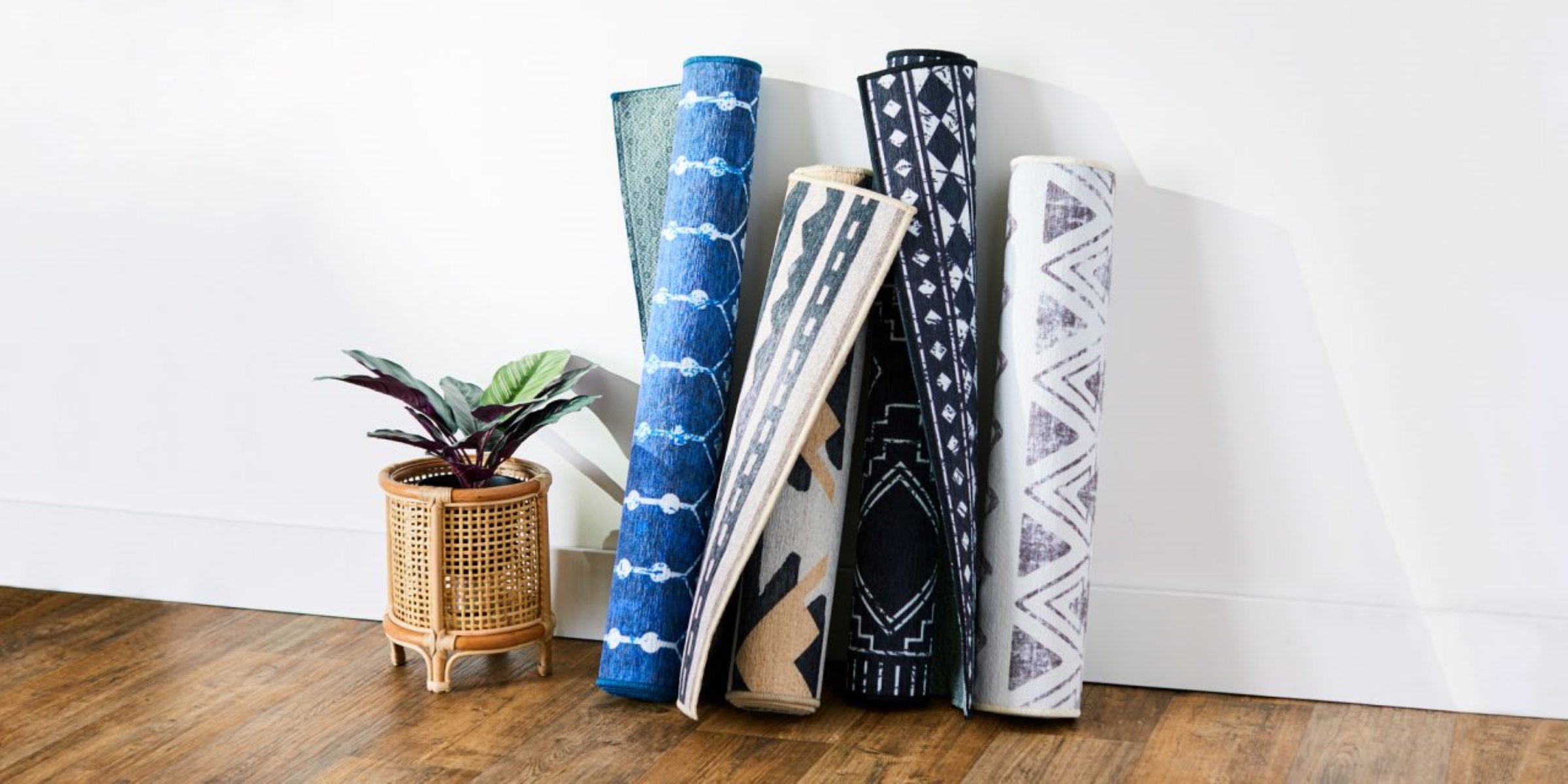
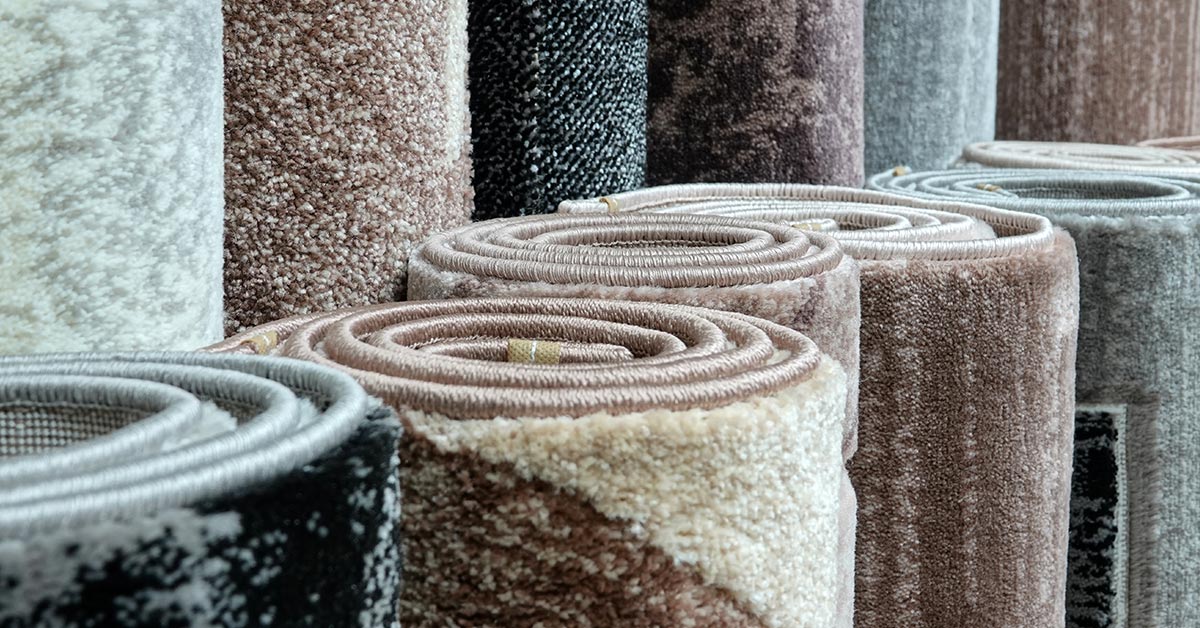
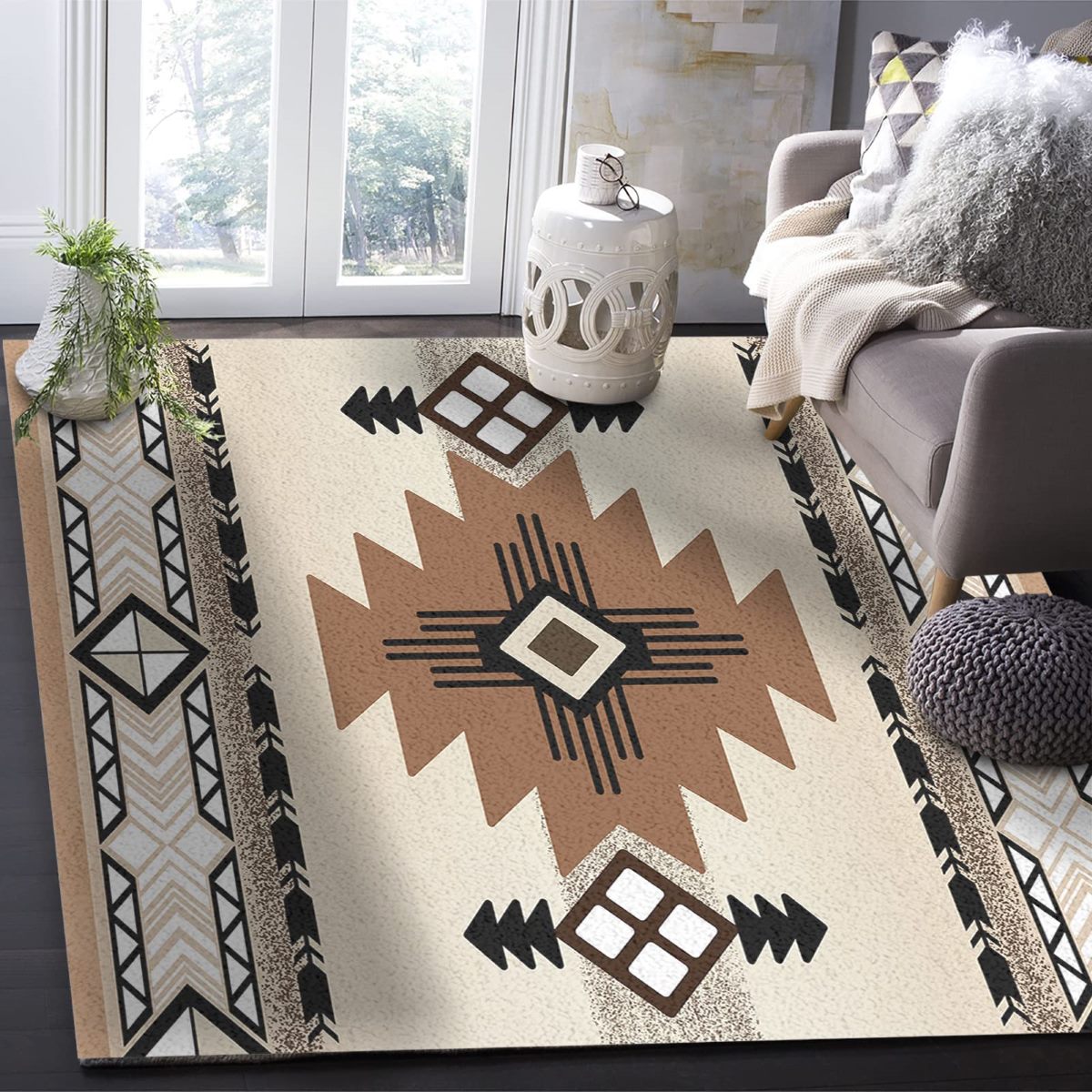
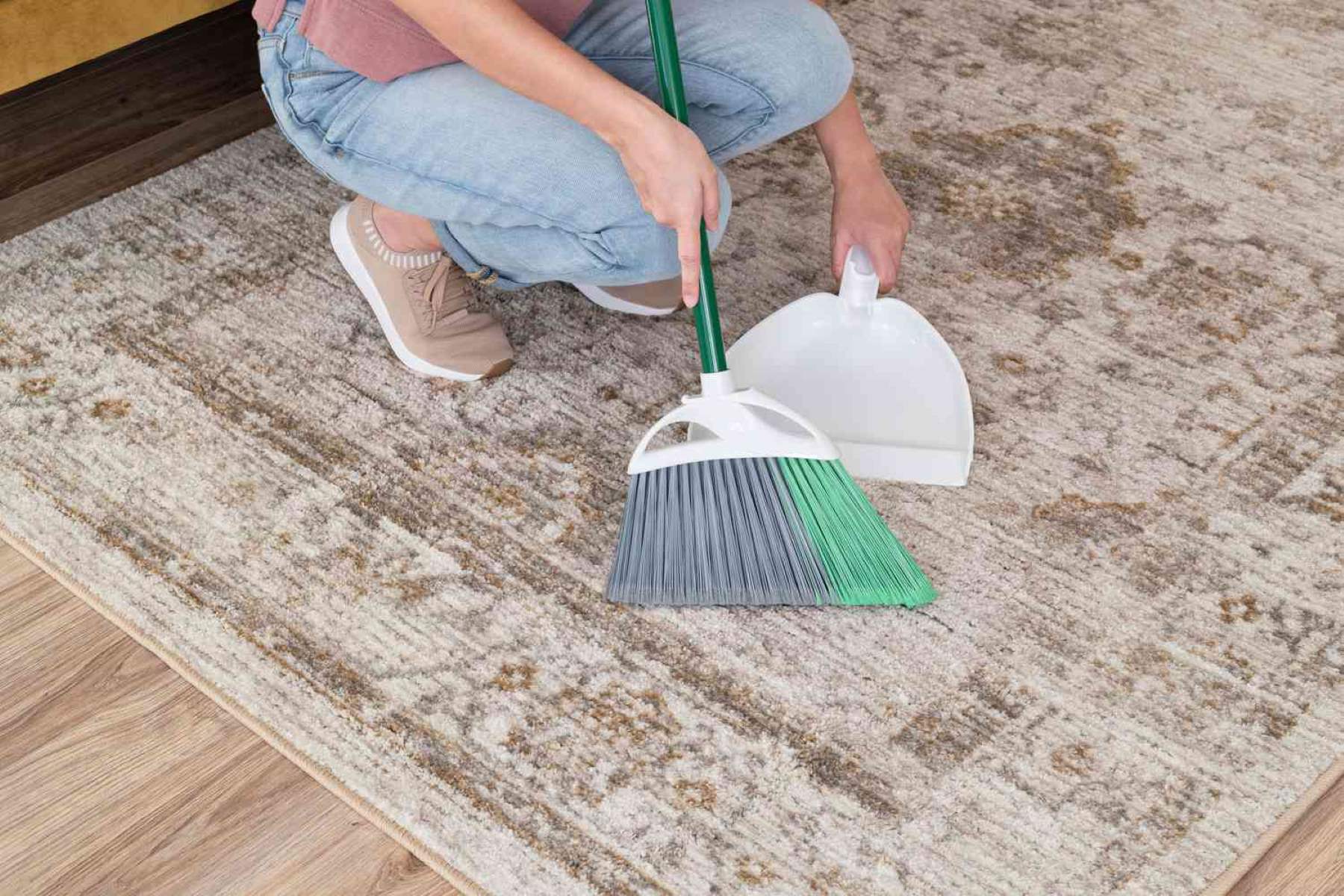
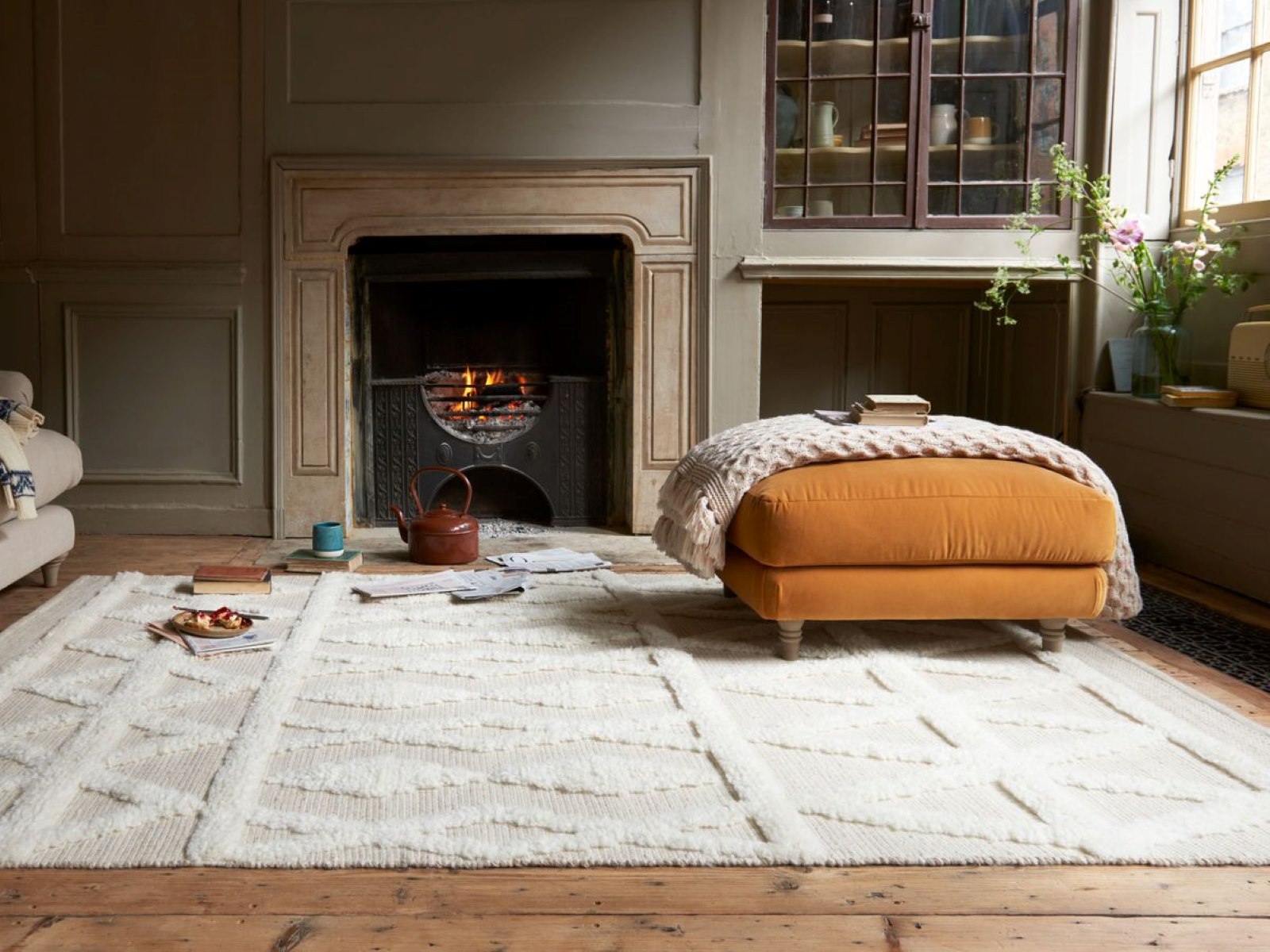
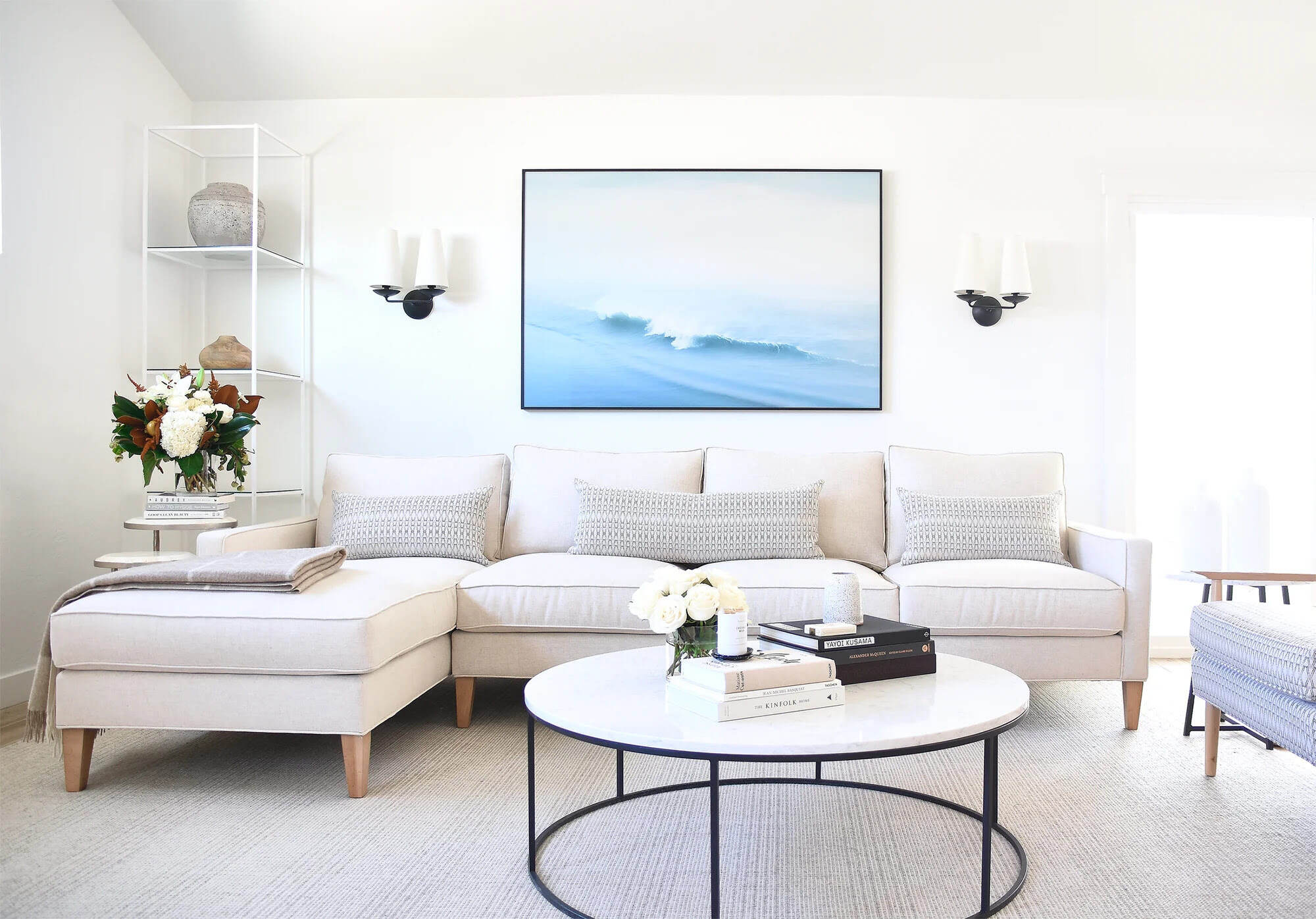
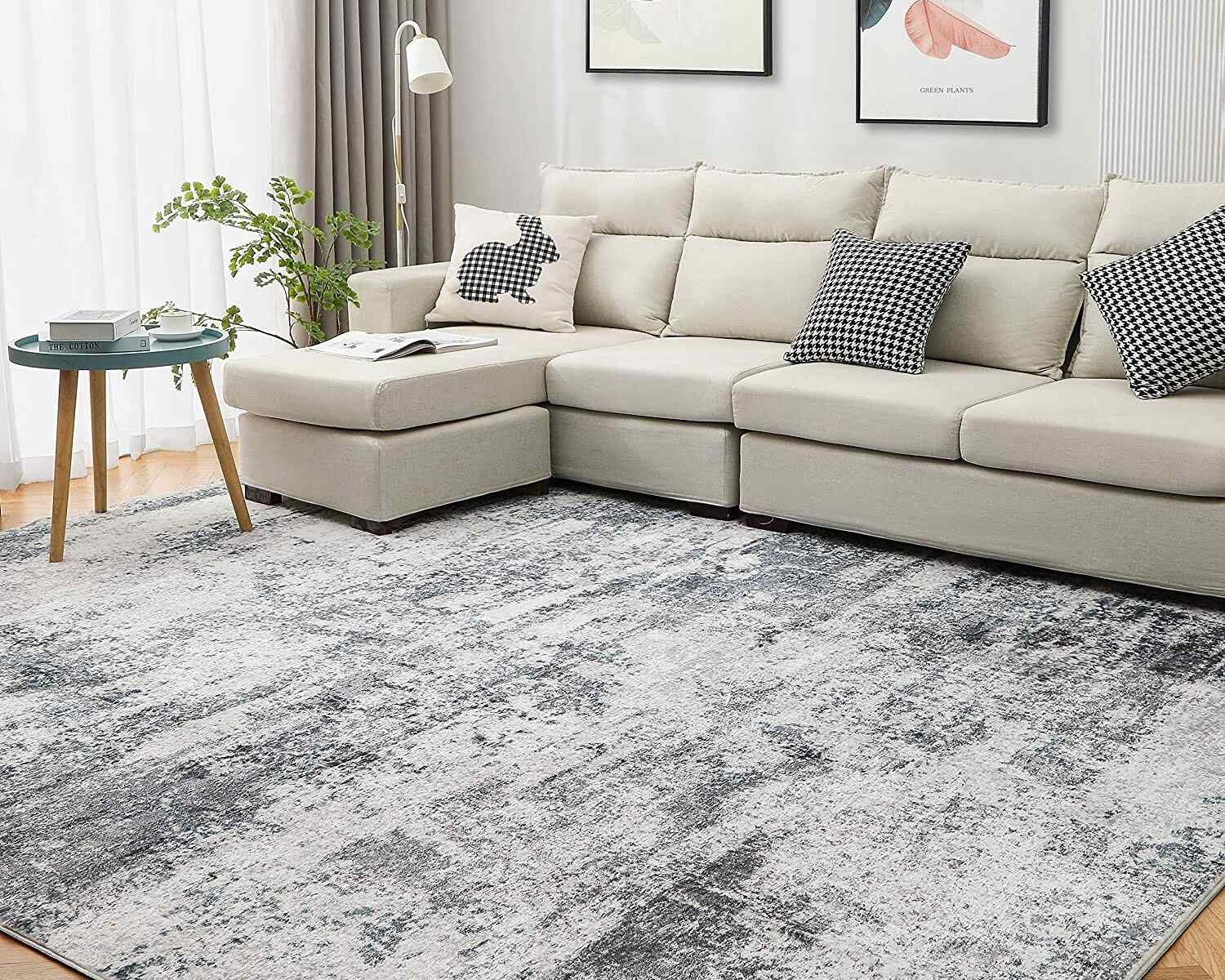
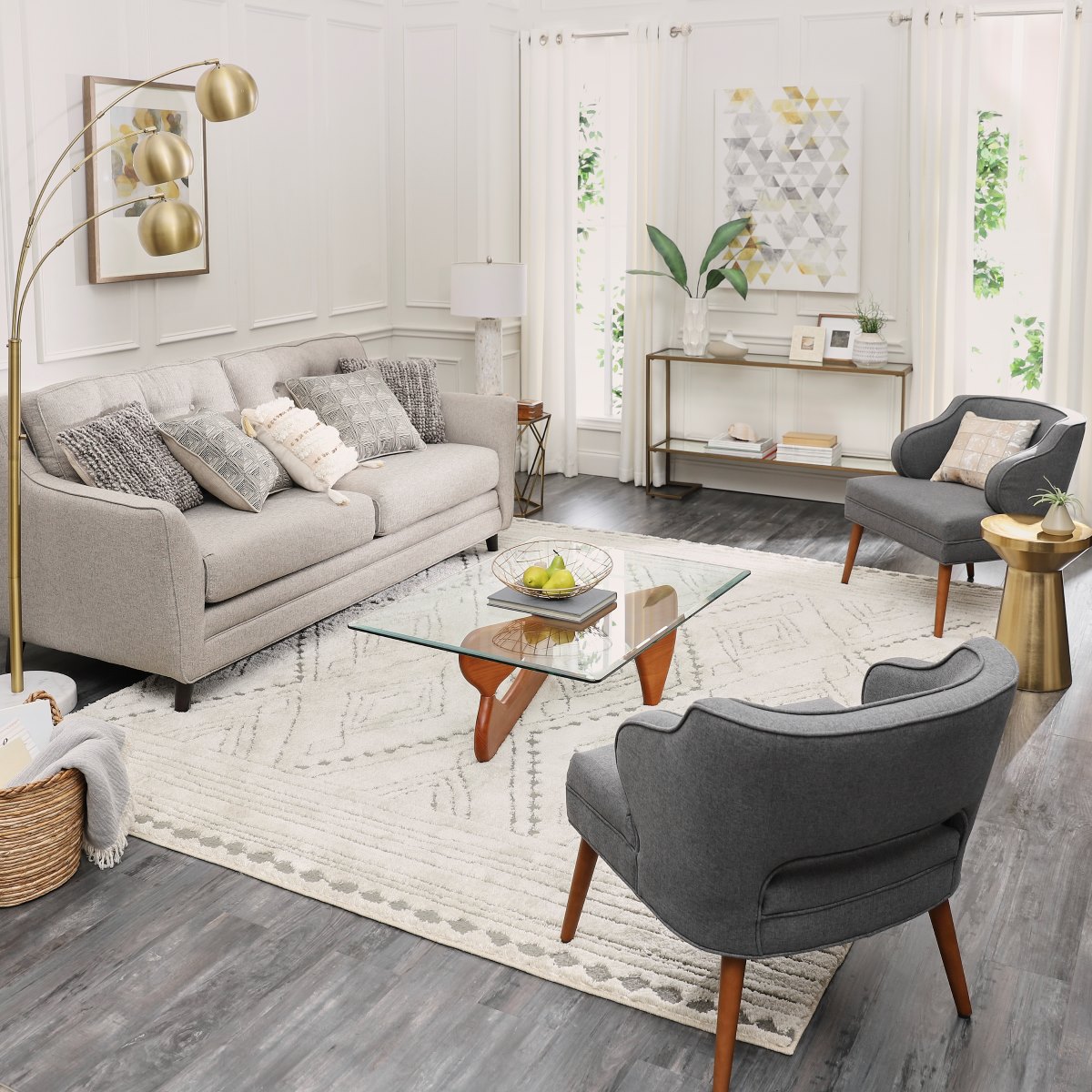
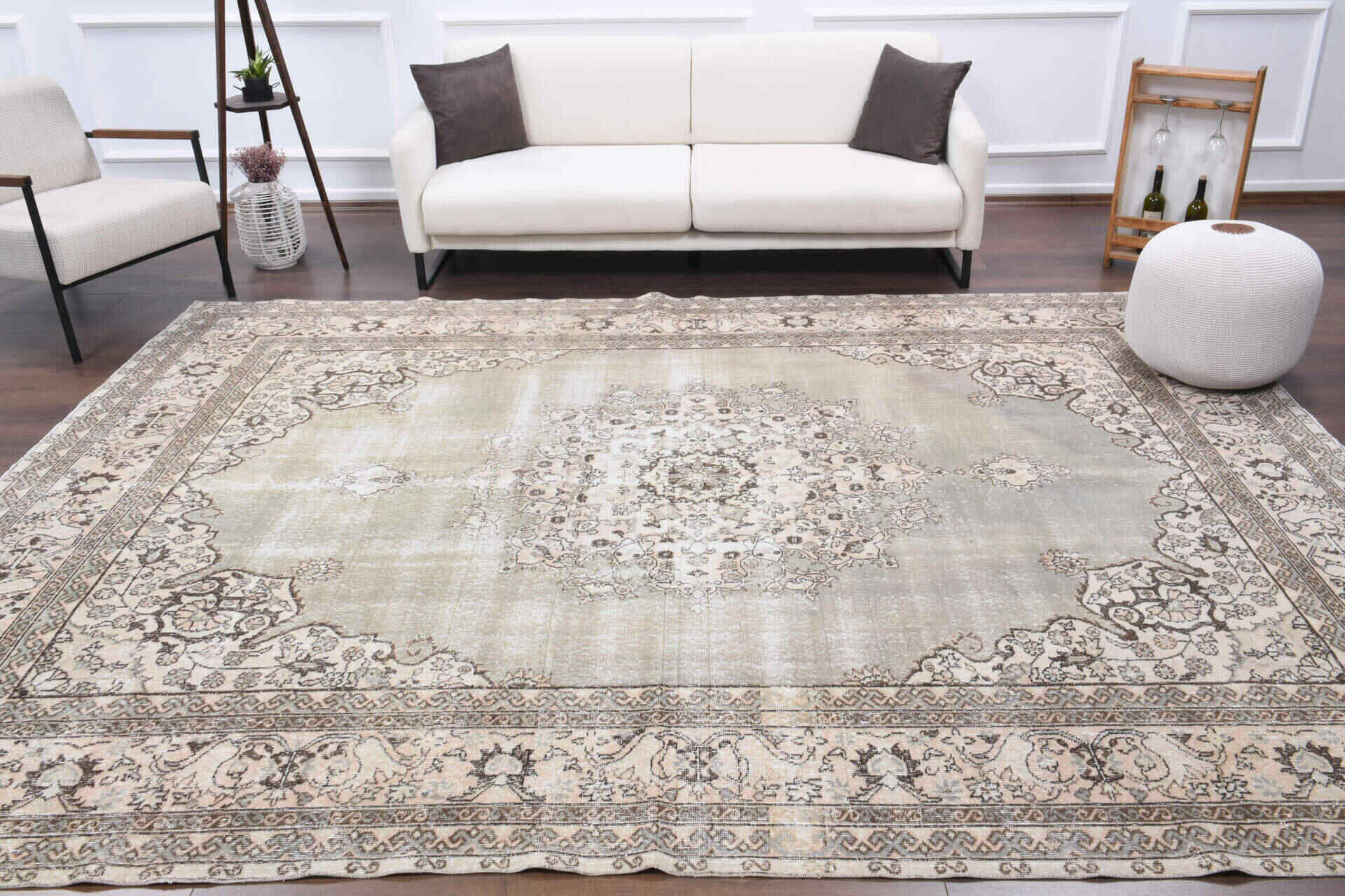
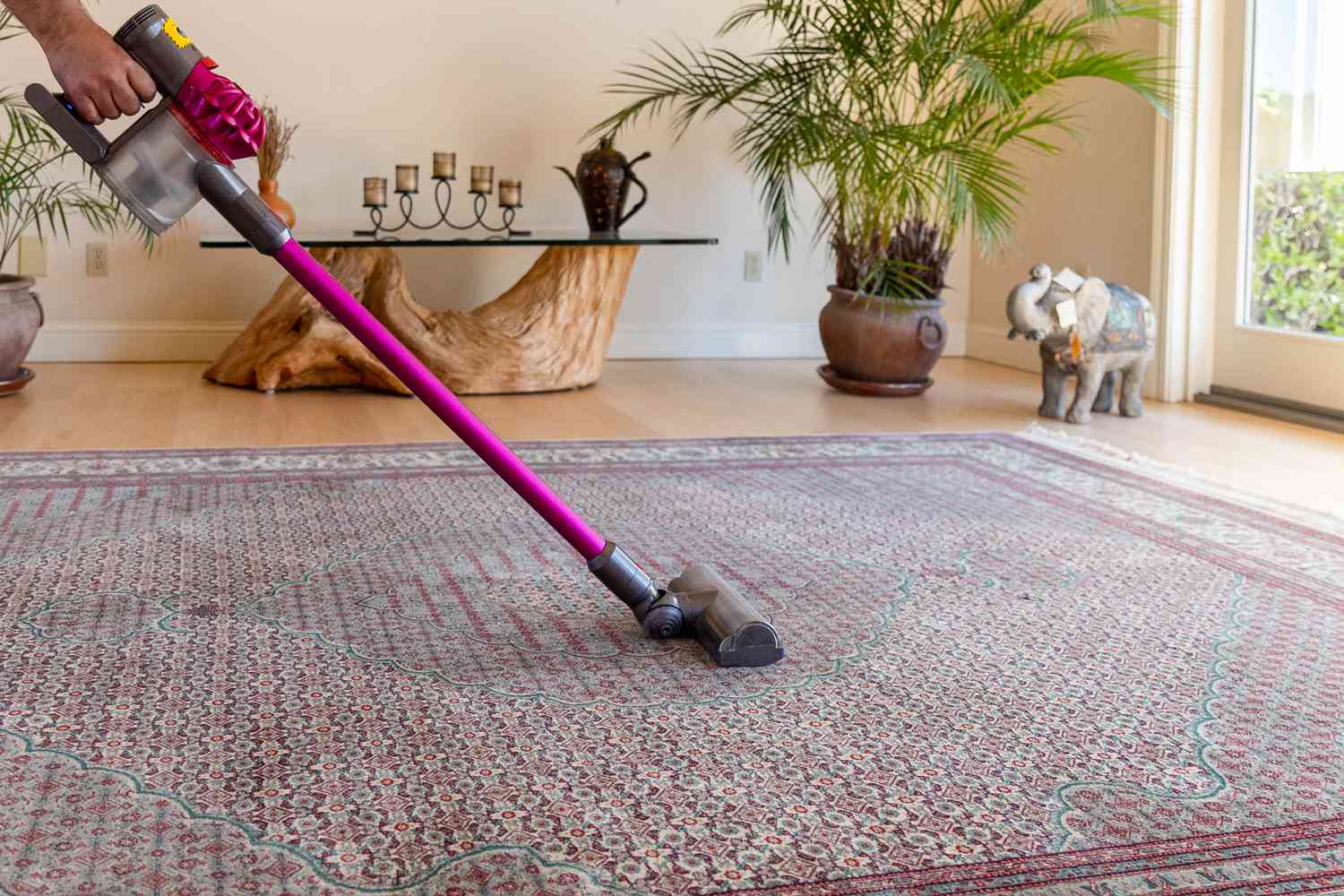

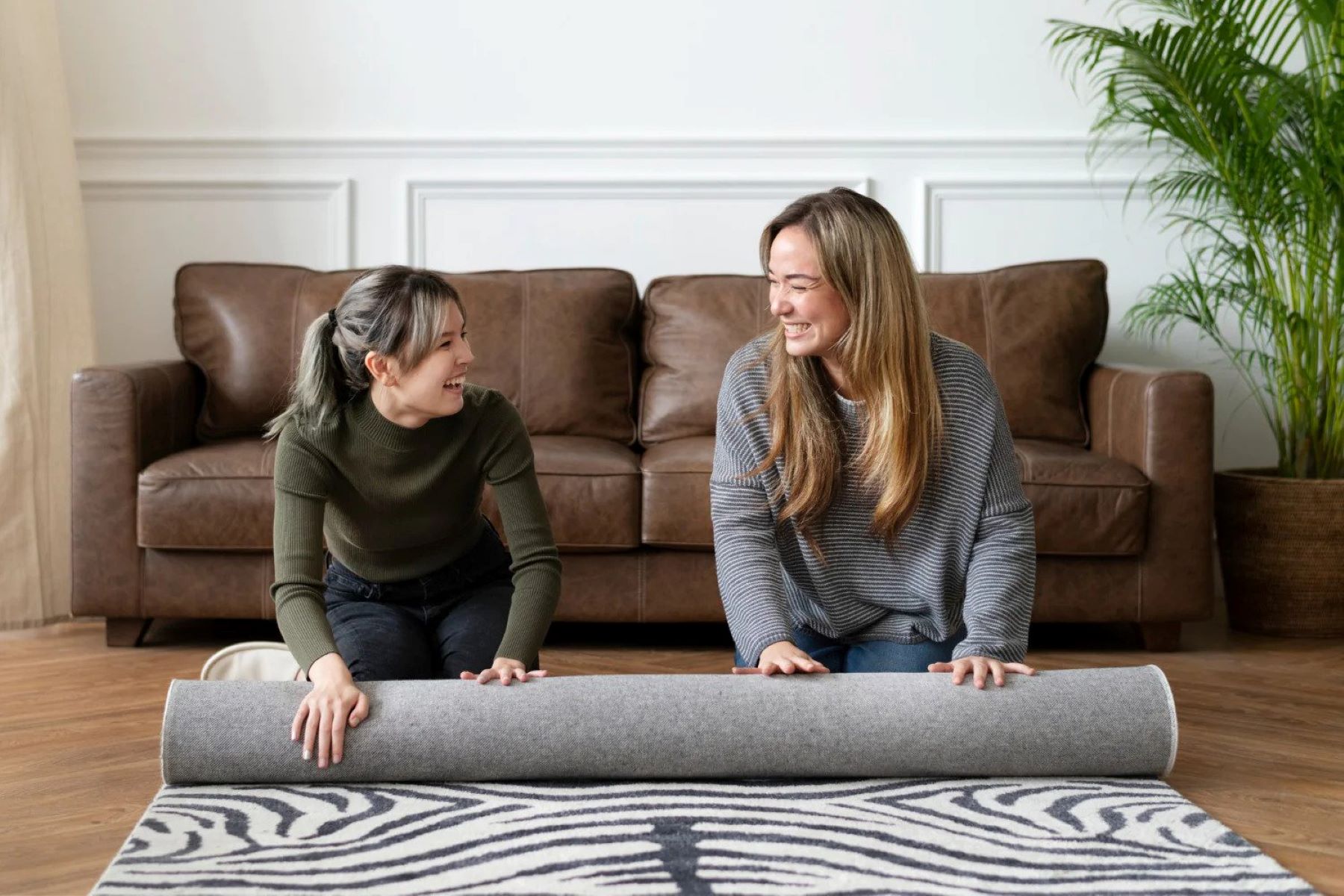
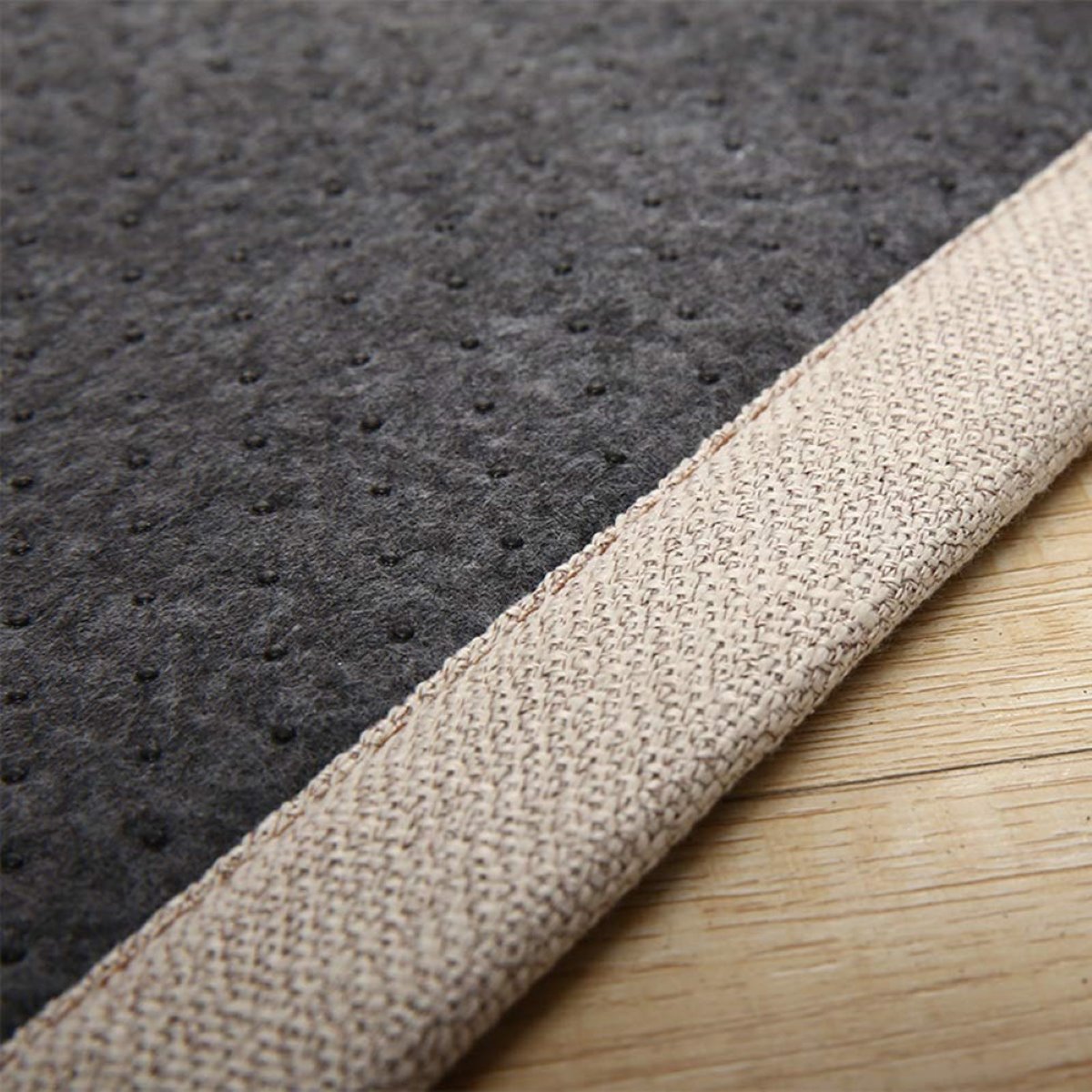
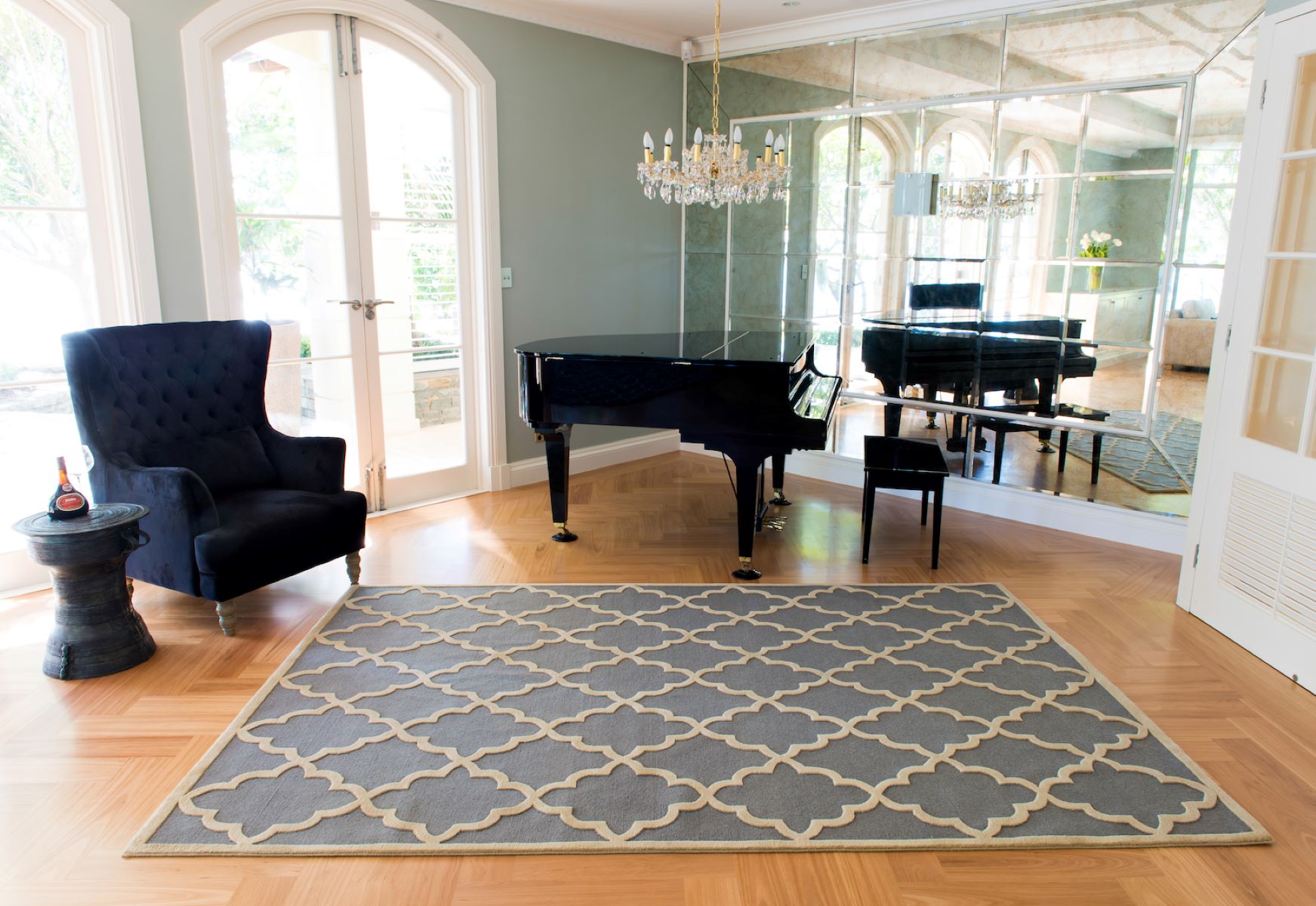

0 thoughts on “What Are Area Rugs”